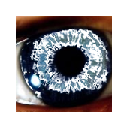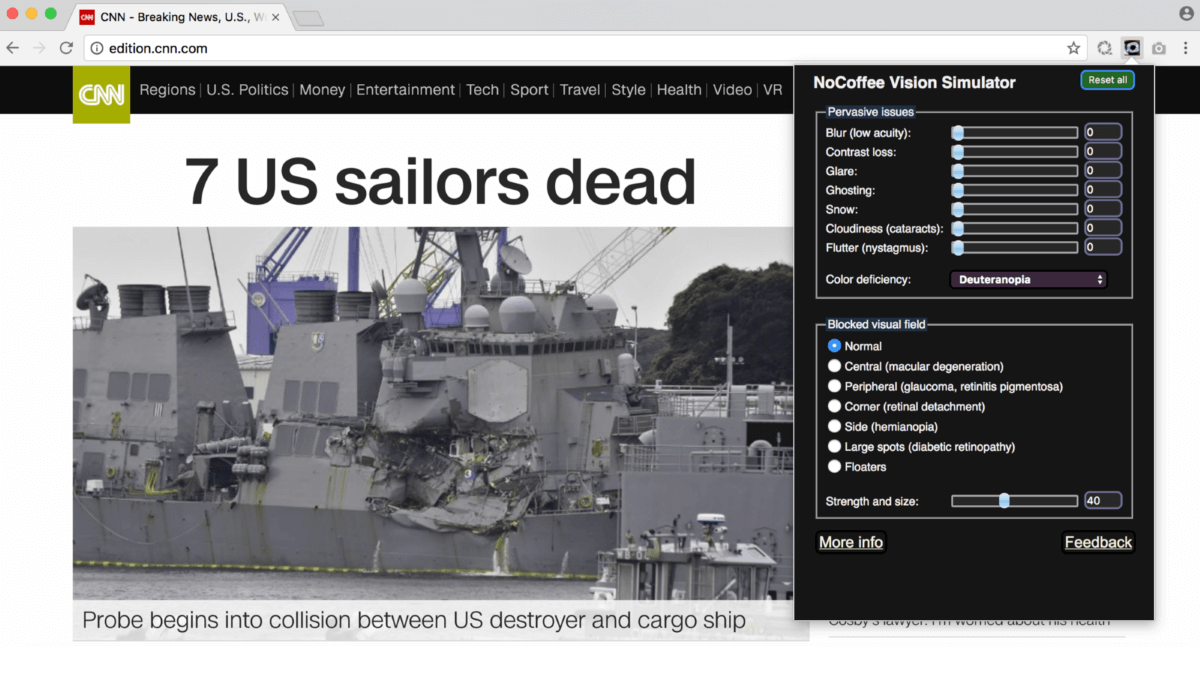
NoCoffee Vision Simulator
NoCoffee can be helpful for understanding the problems faced by people with slight to extreme vision problems, such as:
* Low Acuity: Some web pages use very small text or click targets. While it’s true that users use built-in browser zoom or screen magnifiers like ZoomText (http://www.aisquared.com/zoomtext/), many non-technical users do not know how.
* Low Contrast Sensitivity: Many designers use text with very low contrast, e.g. light gray text on white. Incidentally, here are some great tools for analyzing contrast on the web, and my favorite is the Snook Colour Contrast Check at http://snook.ca/technical/colour_contrast/colour.html.
* Colorblindness: Although color use in design is definitely a good thing, it’s important to remember the maxim “do not rely on color alone”, as 7-10% of males have some form of colorblindness. Chris Campbell has a great article describing color-related design problems and solutions. See http://www.particletree.com/features/interfaces-and-color-blindness/.
* Visual snow, glare, ghosting and cataracts.
* Nystagmus (rapid, involuntary, oscillatory movement of the eyes).
* Obstructed visual field: floaters, obstruction to one side (retinal detachment or hemanopia), obstructed central vision (glaucoma), spotty vision (diabetic retinopathy) or obstructed peripheral vision (retinitis pigmentosa or macular degeneration). Note: the simulations of partial visual fields cannot follow your eye gaze as they would in the real world.
